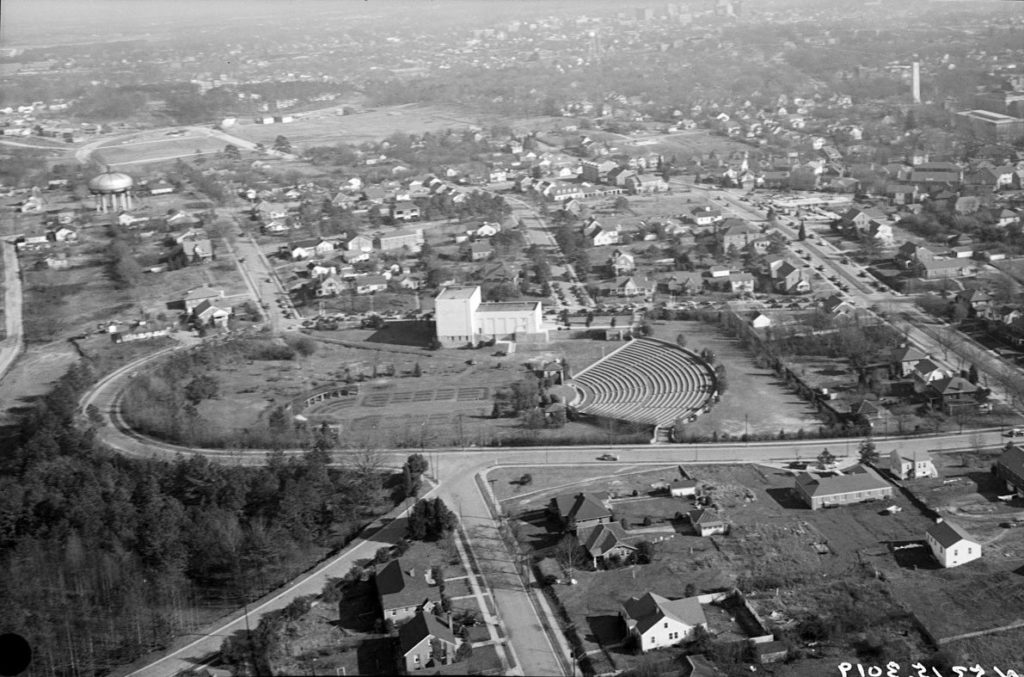The Raleigh Little Theatre campus, including the Stephenson Amphitheatre and Raleigh Rose Garden, sits on land belonging to the Lumbee and Tuscarora tribes.

Aerial view, Raleigh Little Theatre and site of Rose Garden, Raleigh, NC, February 11, 1949.
From the Albert Barden Collection, North Carolina State Archives
The heart and homeland of the Lumbee People are found in southeastern North Carolina, amongst the pines, swamps, and dark waters of the Lumbee River. The ancestors of the Lumbee were survivors of tribal nations from the Algonquian, Iroquoian, and Siouan language families, including the Hatteras, the Tuscarora, and the Cheraw. The ancestors of the Lumbee were recognized as Indian in 1885 by the State of North Carolina, and eventually congress recognized the tribe, but no federal benefits are associated with this designation. Lumbee tribal headquarters are located in the small town of Pembroke. (From Lumbee tribe materials)
The Tuscarora or “hemp gatherers” are a Native American people of the Iroquoian-language. Before the arrival of Europeans in North America, the Tuscarora had migrated south and settled in the region now known as Eastern Carolina. This was the most numerous and powerful indigenous nation in North Carolina and they lived along the Roanoke, Neuse, Tar, Pamlico, and Cape Fear rivers. In late 17th and early 18th-century North Carolina, European colonists reported two primary branches of the Tuscarora: a northern group led by Chief Tom Blunt (King Blount), and a southern group led by Chief Hancock. The Tuscarora war of 1711 kicked off a tribal migration that went through the late 1780s and many Tuscaroras left their homelands of Bertie County for Bladen County. Tuscarora bloodlines can be traced to the present day Indian settlements on the Drowning Creek, Back Swamp, Flowers Swamp, and Saddle Tree area in Robeson County, North Carolina. (From Tuscarora tribe materials)
Visit https://native-land.ca/ to learn more about the land where you live and other parts of the world.